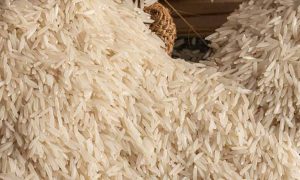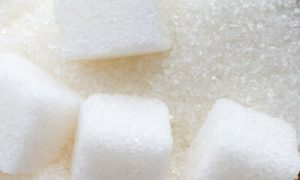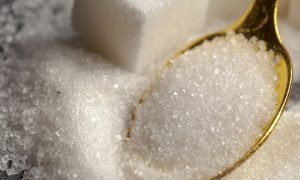Bangladesh : State sugar mills battle staggering losses as govt plans revival of closed units

Thakurgaon Sugar Mills, established in 1956, is facing operational struggles due to outdated equipment and low sugar extraction rates. In FY24, it produced only 3,323 tonnes of sugar, well below its capacity. The government’s plan to reopen closed mills and modernize infrastructure aims to reduce losses. However, improving sugarcane quality and production efficiency remains crucial.
Established in 1956 with a daily capacity of 1,500 tonnes, Thakurgaon Sugar Mills produced just 3,323 tonnes of sugar in FY24 – much below its annual capacity of 15,240 tonnes – adding Tk66 crore to its already staggering accumulated losses of Tk792 crore.
This struggle mirrors the challenges faced by all 15 state-owned sugar mills, burdened by decades-old machinery and unavailable spare parts due to defunct manufacturers.
Adding to these woes is the sharp decline in sugar extraction rates – the percentage of sugar that can be extracted from sugarcane during the milling process.
Last fiscal, the rate hit a historic low of 5.07% last year, according to data from the Bangladesh Sugar and Food Industries Corporation (BSFIC) and the Bangladesh Sugarcane Research Institute (BSRI).
Experts said this decline is due to outdated equipment, low-yield sugarcane varieties, improper fertiliser use, premature harvesting, and inefficiencies in the production process, worsening the industry’s crisis.
Despite years of losses, the interim government plans to reopen closed mills.
Industries Adviser Adilur Rahman Khan, during a mid-November visit to Setabganj Sugar Mill in Dinajpur, announced that steps were underway to resume production of the mill.
The government has already formed a committee to expedite the process, he announced.
Also, the industries ministry established a supervisory committee in October to oversee sugarcane crushing and cultivation activities, particularly for six temporarily suspended mills, said the adviser.
Setabganj Mill is among the six state sugar mills that were closed in December 2020 amid a heavy financial burden. The others are Pabna Sugar Mills, Shyampur Sugar Mills in Rangpur, Panchagarh Sugar Mills, Rangpur Sugar Mills, and Kushtia Sugar Mills. Keeping the mills closed is not a solution. They incur losses even when closed. Therefore, the plan is to keep the mills operational and focus on reducing the losses.
Md Anowar Kabir, secretary at the Bangladesh Sugar and Food Industries Corporation, has confirmed that efforts are underway to reopen closed mills in order to reduce losses.
He told The Business Standard that the mills were shut down during the previous government’s tenure based on directives from the Prime Minister’s Office (PMO).
“Despite several attempts to reopen them, the lack of approval from the PMO had prevented this. However, the Chief Adviser’s Office has issued directives to restart production, and the industries ministry is actively working on this,” he said.
When asked whether the mills could become viable given the current low sugar extraction rate from sugarcane, he said, “Keeping the mills closed is not a solution. They incur losses even when closed. Therefore, the plan is to keep the mills operational and focus on reducing the losses.”
He added, “A taskforce was formed to reopen the closed mills, and they have submitted a report to the Chief Adviser’s Office, recommending the reopening of the mills.”
Regarding ways to reduce losses, he said, “Ensuring a sufficient supply of raw materials and improving the quality of sugarcane is essential. If the mills operate for one-third of the year, around 120 days, it will be possible to make them profitable. That is the plan in progress.”
Md Shamsul Arefin, senior scientist and head of the Physiology and Sugar Chemistry Division at the BSRI, told TBS that it will not be possible to make the sugar mills profitable by relying solely on sugar production from sugarcane.
To address these issues and make the mills profitable, Arefin proposed modernisation of the mills, along with the establishment of distilleries or the production of agro-based products.
“If mills could operate for at least four months a year, sugar production could increase,” he said, noting that the mills currently run for only two to two and a half months due to a lack of raw materials.
Sugar extraction hits the lowest
Available data from Bangladesh Sugar and Food Industries Corporation and the Bangladesh Sugarcane Research Institute shows last year’s sugar extraction rate of 5.07% was the lowest since Bangladesh’s independence.
In the 1971-72 fiscal year, the sugar extraction rate was 5.92%, while the highest was FY90 at 8.77%, according to the BSRI, which conducts research on sugarcane, palmyra palm, date palm, and sugar beet – key raw materials for sugar, molasses, and cane juice.
In Bangladesh, sugar has traditionally been produced by state-owned mills through sugarcane extraction, while the private sector, which now dominates the industry, produces sugar by importing and refining raw sugar.
The government operates 15 sugar mills under the Sugar and Food Industries Corporation, most of which were established before independence and nationalised after liberation. Of the 15 mills, nine were built during the Pakistan era, three before that, and three after independence.
However, due to the low extraction rate, state-run mills face significant annual losses, compounded by high operational costs, staffing expenses, loans, and fixed costs.
The accumulated losses of these government-owned mills have reached around Tk11,500 crore till FY24, according to an analysis of their annual reports.
Far behind neighbours
In India and Pakistan, the sugar extraction rate from sugarcane is around 10%, nearly double the rate in Bangladesh, according to data from the BSRI.
Sugar extraction rates in India’s Maharashtra, Bihar, Haryana, and West Bengal regions range from 9.46% to 10.02%. In Pakistan, Sindh achieves a 9.90% rate, while Punjab’s rate is 9.70%.
As of 15 January 2024, India’s average sugar recovery rate stood at 9.51%, according to ChiniMandi, a news and information platform for the sugar and allied industries.
Besides, Bangladesh’s sugarcane production stands at 46 tonnes per hectare, significantly lower than the over 70 tonnes seen in neighbouring countries.
Senior Scientist Shamsul Arefin explained that the disparity is due to outdated infrastructure and poor farming practices in Bangladesh. “The mills in Bangladesh are old, dilapidated, and lack modernisation, which hampers efficient sugar extraction.”
He also noted that sugarcane in Bangladesh is often planted late, leading to early harvesting before it fully matures. Additionally, improper fertiliser use, such as delayed application of urea, further contributes to the lower yields.
“Farmers often apply urea indiscriminately to increase weight, as mills purchase sugarcane by weight,” Arefin said, adding that sugarcane must be crushed within 24-36 hours of harvesting, but mills often delay processing, which reduces sugar content.
31,000 tonnes of sugar for Tk1,300cr
According to data from the BSFIC, the country’s sugar mills produced around 31,000 tonnes of sugar in FY24, while the annual demand exceeds 2 million tonnes.
The total cost for the 16 mills – comprising 15 sugar mills and one engineering firm which produces and repairs machines of the sugar mills – was Tk1,298 crore.
Carew & Company, which runs both a sugar and distillery unit, accounted for approximately Tk500 crore of the total cost. It is the only entity under the BSFIC to report a profit, achieving over Tk80 crore in earnings.
Despite the substantial costs, the mills earned only Tk716.92 crore, resulting in a loss of Tk581.90 crore. With the current cost structure, the production cost of sugar exceeds Tk400 per kilogram.
The state sugar mill’s grim picture was highlighted in the Industries Ministry’s annual report for FY24.
Published in early October, the report reveals that the mills’ sugar production last fiscal was well below the target of 45,010 tonnes. This follows a historic low of 21,000 tonnes in the previous year. Besides, the sugar extraction rate was projected at 6.43% but reached only 5.07%.
Mills sold 20,641 tonnes of sugar, far short of the 45,010-tonne target. Revenue from sugar sales was expected to total Tk450 crore, but only Tk255.86 crore was achieved, meeting just 56.85% of the target.
Md Shahjahan Kabir, managing director of Thakurgaon Sugar Mills, told TBS that due to a lack of raw materials, they were unable to operate the mill at full capacity.
“To sustain operations, we need high-yield varieties of sugarcane,” he noted. “The mill’s machinery is very outdated. Modernisation is crucial to improve output, but this has not yet been implemented.”
To read more about Sugar Industry continue reading Agriinsite.com
Source : The Business Standard















